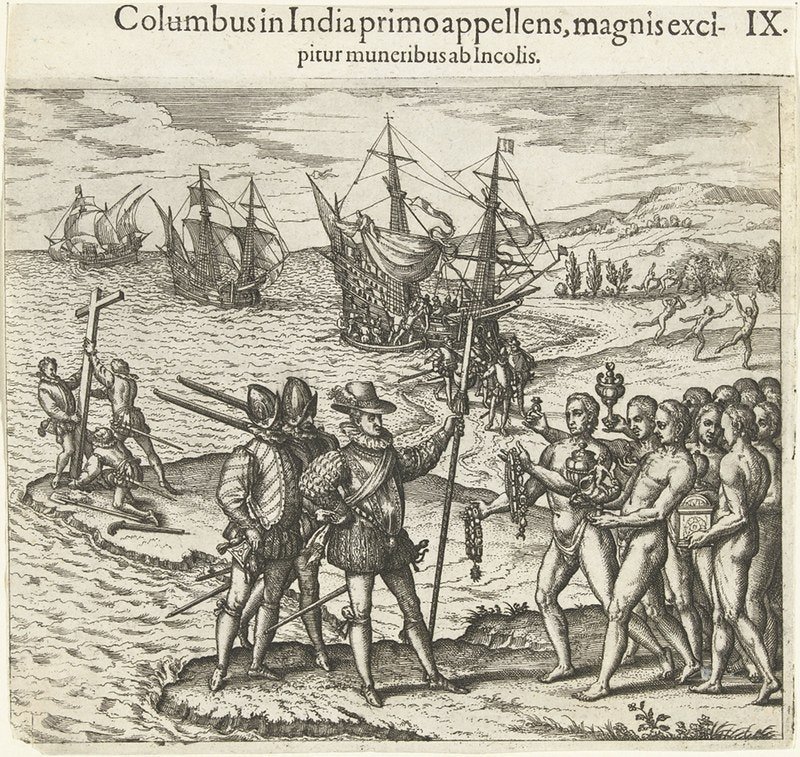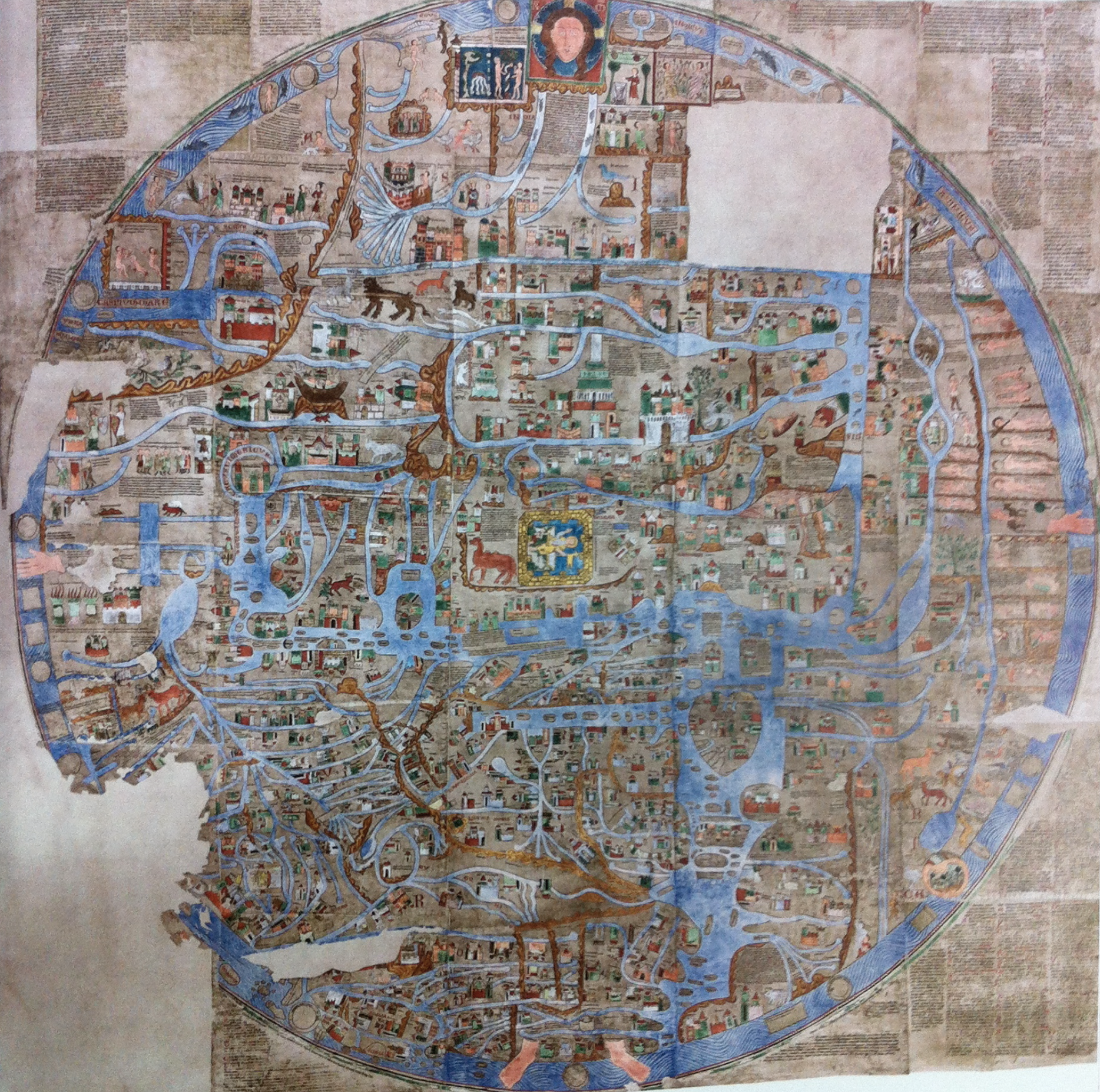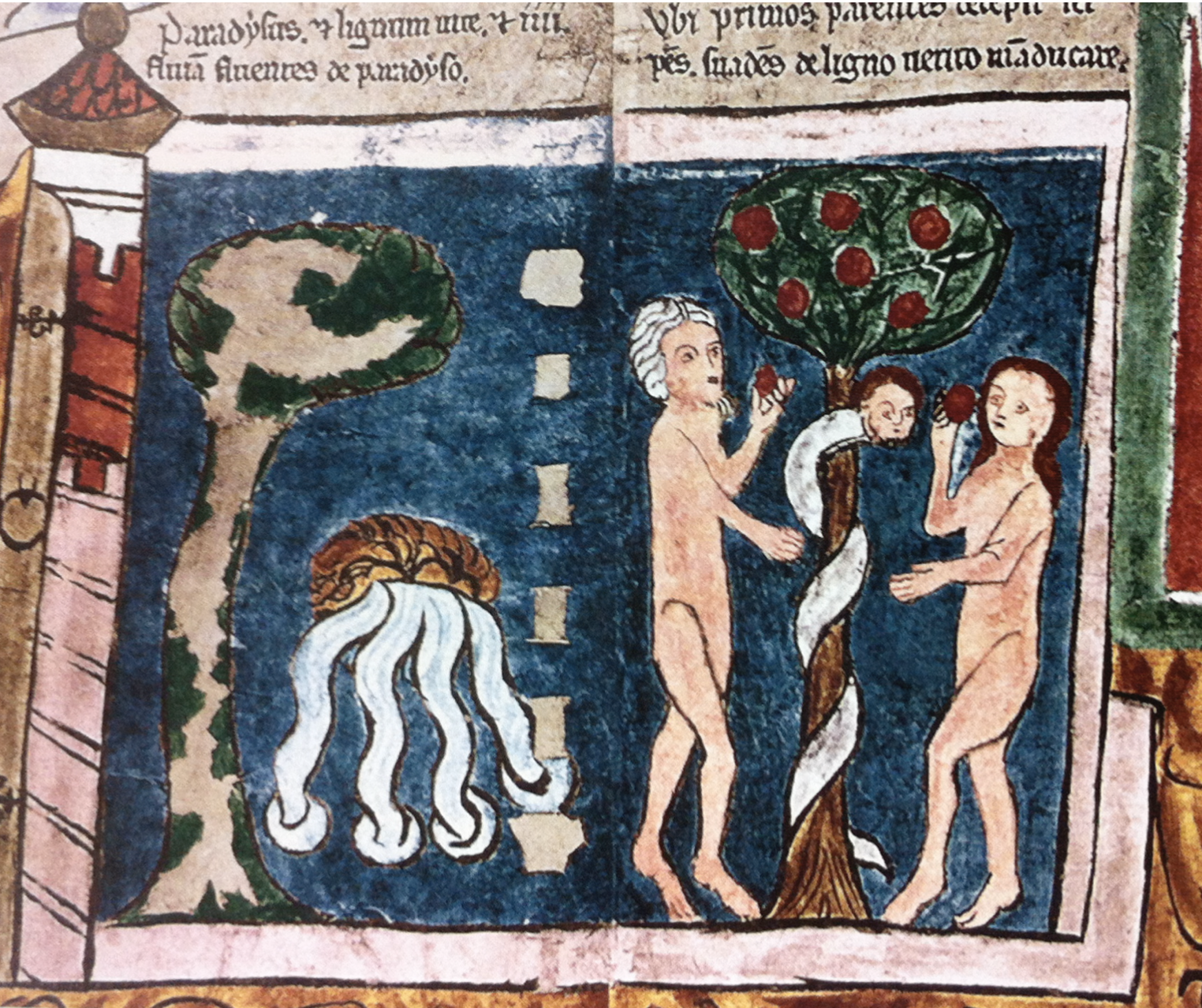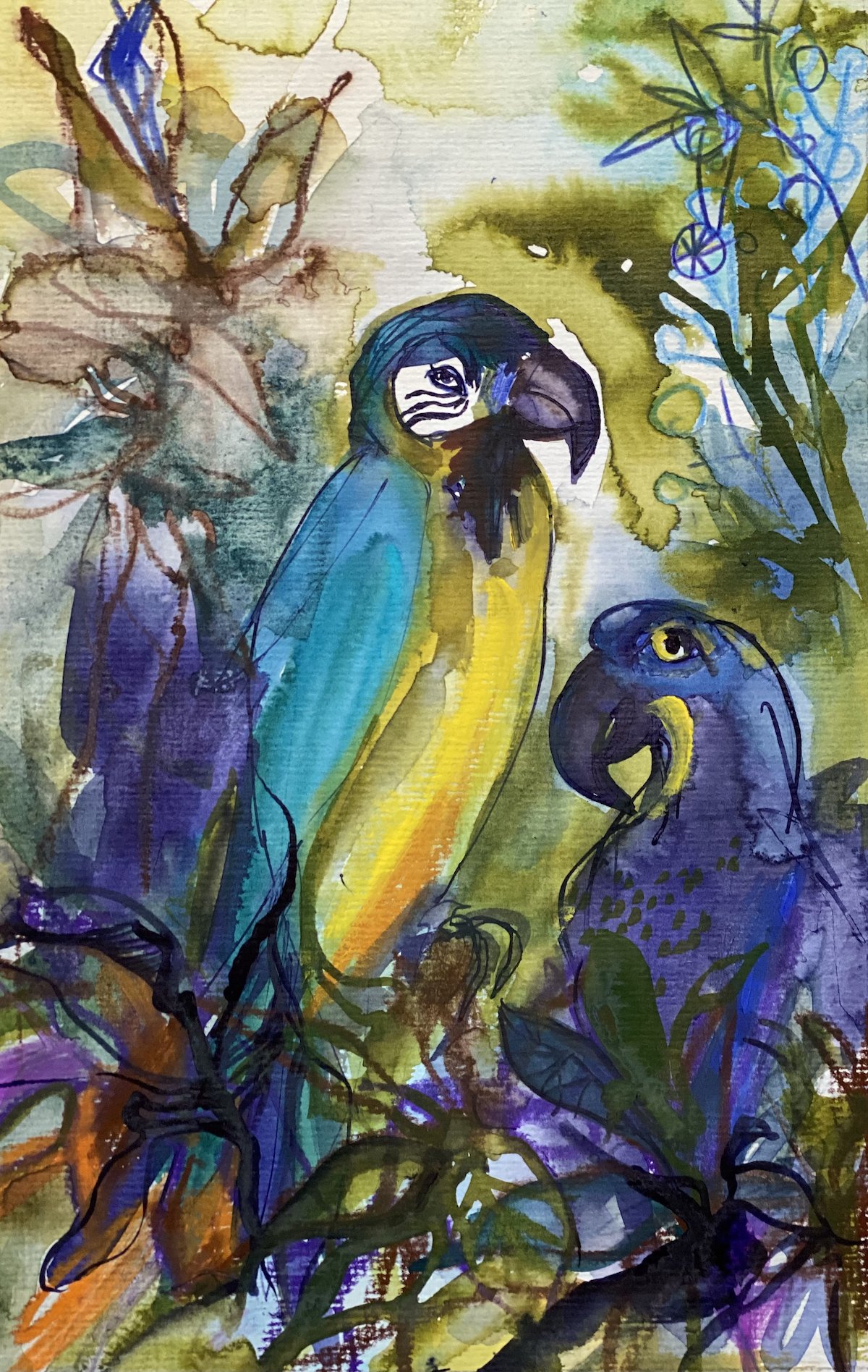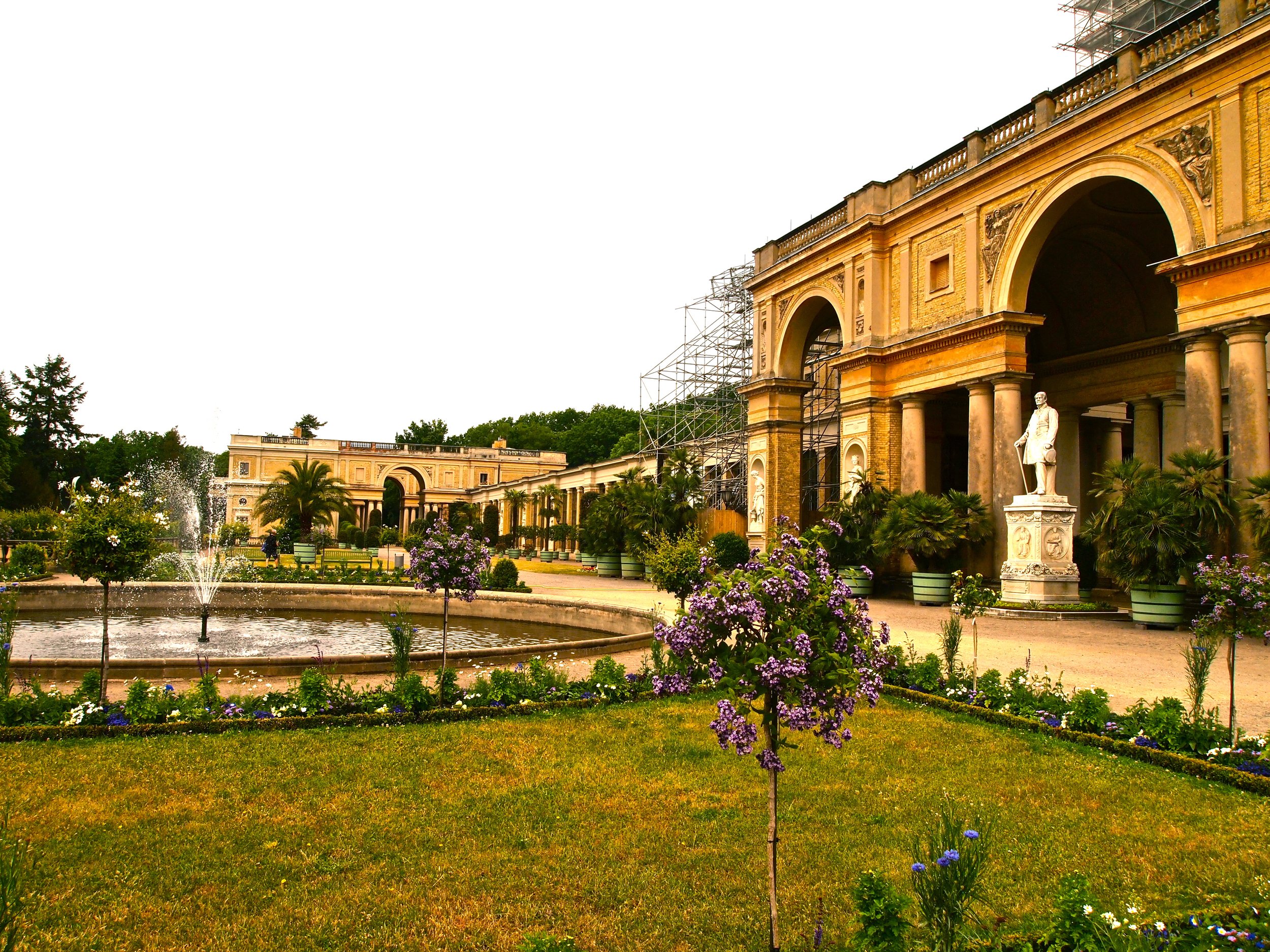SAILING FOR EDEN
Sailing for Eden
Columbus & the Medieval Search for Paradise
Written in English.
In July 1498, after a perilous sea journey, a Genoese admiral and his crew sighted land, at long last. The admiral was Christopher Columbus and this was the third of his four voyages of discovery, venturing further south than on his previous expeditions. The official reason for his expedition was to discover a sea route to Asia; however, Columbus also nurtured more private ambitions concerning the whereabouts of paradise.
Although famous for discovering America, Columbus never realised that he had indeed found a continent unknown to Europeans. He believed himself to be near Asia’s easternmost part, having calculated that Asia must be a few thousand nautical miles to the west of Europe (Scafi 2013:80). The fleet had been becalmed for weeks in scorching temperatures; fearing the threat of mutiny and sickness (perhaps the crew were adherents of the wide-spread medieval belief that the equatorial zone, or the ‘torrid zone’, was inhabitable to humans and that, as the Greek scholar Erastothenes believed, the sun would burn men alive (Rushby 2006:68)), Columbus eventually turned west and reached modern-day Trinidad.
Calculations based on his probably erratic compass readings lead him to the peculiar postulation that he was sailing up a slope (Rushby 2006:67). He later wrote to King Ferdinand and Queen Isabella of Spain, who had partly funded his mission: “I have found such great irregularities that I have come to the following conclusions concerning the world: that it is not round as they describe it, but the shape of a pear, which is round everywhere except at the stalk, where it juts out a long way, […] something like a woman’s nipple” (cited in Rushby 2006:68). Columbus concluded that this great earthly nipple was the exact point where the long-lost Garden of Eden was to be found, and that he was going to play a pivotal, and possibly well-rewarded, role in its discovery (Rushby 2006:68).
Christian paradise was understood by many medieval theologists as a very specific place on earth that marked the beginning of human time. Medieval mapmakers took up the challenge to locate the mysterious Garden of Eden cartographically. This endeavour entails a fascinating fragment of Western intellectual history, not least “because of the inherent paradox of mapping the unmappable” (Scafi 2013:30). Towards the end of the 15th century, the idea of an earthly paradise in a real, geographical location somewhere in the east was still very much ingrained in the public imagination. Paradise was believed to be inaccessible as it was situated on top of a very high mountain, thus Columbus’ conclusion of sailing upwards led him to the belief that he was advancing towards paradise.
Christian interest in the location and mapping of an earthly paradise, sparked in the fifth century CE by St Augustine’s literal interpretation of Genesis, was more or less restricted to Latin Christian Europe. Eastern Christians preferred a more symbolic reading of the paradise narrative (Scafi 2013:30). Early debating on the nature and location of the Garden of Eden resulted in two main approaches, one allegorical and one literal. The literal interpretation produced a story of paradise tied closely to the plane of human history; it brought the divine almost into reach. St Augustine believed that to doubt the historicity of the Bible implied that Scripture could be questioned; and to deny the historical existence of Adam and Eve and the story of the Fall was to risk the whole Christian dogma falling apart (Scafi 2013:43). Such a literal approach would imply a very real site for paradise. The question of paradise’s whereabouts caught the imagination of biblical exegetes “who drew out of Augustine’s writings the latent geographical discourse and who named the place where mapmakers could put paradise” (Scafi 2013:44).
The Ebstorf World Map is a splendid example of medieval ideas of paradise. Possibly made in Ebstorf in Northern Germany and dated between the late thirteenth and early fourteenth century, the Ebstorf world map depicts the Garden of Eden as an “event-place at the very boundary of time and space” (Scafi 2013:72). It is represented at the very top of the map by a rectangle enclosing Adam and Eve, the four rivers of paradise as they disappear into the ground, the Tree of Life and the Tree of Knowledge of Good and Evil. The mysterious garden is located in the East, near India. Unlike modern maps, it is oriented with east is the top, signifying it as the most important direction because of the presence of paradise. A giant Christ is embracing the world; his feet can be seen sticking out at very bottom in the west.
While Columbus certainly had more modern navigational maps at his disposal, he did believe – rightly so – that by sailing westward around the globe, he could reach what lay East of Europe. Finding himself approaching the mouth of the Orinoco river, Columbus was amazed by the vast quantities of freshwater flowing into the ocean. Contemporary depictions of paradise imagined a great river near paradise, the source of the four paradisiacal rivers that connected earth and paradise. This, together with the fertility and beauty of the land they sailed alongside, convinced Columbus that he was on the outskirts of the actual Garden of Eden, as he wrote in his log: “All this provides great evidence of the Earthly Paradise, because the situation agrees with the beliefs of those holy and wise theologians” (cited in Rushby 2006:69). An encounter with this blessed land’s inhabitants swept away all remaining doubts: “Canoes came to greet them and Columbus noted the finely proportioned people who wore pearls and gold on their necks and arms” (Rushby 2006:69) and who heaped the explorers with gifts of maize, fruits and tame parrots. The inhabitants seemed to have no sense of private property or ownership – something that amazed the Europeans navigators beyond measure. Although not new to Columbus, those parrots seemed significant. In Latin Christian theology, all animals could speak before the Fall. Now, “they were on the very doorstep of Eden and talking birds appeared” (Rushby 2006:69).
Although Columbus was a devout Christian, he was most certainly also influenced by other, more ancient, models of paradise: Ovid’s description of the Golden Age in his Metamorphosis when men and women lived together peacefully without the need for laws in a perpetually fruitful rural idyll, the “rough-hewn place of innocence and rugged virtue” (Rushby 2006:70) of Arcadia, and the more refined perfection of Elysium. Features of these classical myths had been incorporated into Christian iconography for centuries.
Having reached his staggering conclusion of paradise’s proximity, Columbus never attempted to reach paradise itself; obviously it was inaccessible and beyond the horizon for ordinary humans (Scafi 2013:80). As he wrote in his log, he assumed the stream leading up to the summit to be impossible to navigate (Scafi 2013:80). For him, the “mystery that paradise could be simultaneously present on earth and also in the beyond was sufficient in itself” (Scafi 2013:80). Christian belief in an earthly Eden rested on its inherent duality: its separateness and simultaneous connectedness (through the four rivers) is the key to understanding the medieval worldview.
By attempting to unravel the geographical contradictions of paradise, renaissance Christian scholars found that they had set themselves a near impossible task. The notion of an earthly paradise was essentially a paradox, part of a real geography yet escaping ‘normal’ conditions such as climactic zones and scientific laws (Scafi 2013:82). In paradise there were no seasons, just a perpetual spring-summer, with fruits and flowers thriving simultaneously all year round. The question where on earth such a perfectly temperate place could be found pre-occupied many scholars and explorers; as did it eventually fuel Columbus’ imagination. Towards the end of the middle ages, the problem of earthly paradise’s exact location assumed greater significance in light of the recovery of astronomical geography – a part of the overall intellectual revolution indebted to Arab intellectuals in Spain, who (re)introduced ancient Greek and Islamic learning to Europe (Scafi 2013:82). The new geographical and astronomical data, allowing for more detailed maps and greater navigating precision, distanced the notion of earthly paradise further and further from any real terrestrial location. Ultimately, “deprived of its aura of mystery and being dissected as a topographical feature, the Garden of Eden was to prove to be in an inaccessible nowhere (Scafi 2013:83).
In his mistaken discovery of Eden, Columbus had indeed marked a turning point in the history of paradise-seeking (Rushby 2006:77). Broken in health and raving with religious obsession regarding the cataclysmic end of time and restoration of paradise on earth, Columbus died in 1509, “steadfastly believing that Cuba was part of Asia, also that he had located the Garden of Eden somewhere to the south of it, and that Christ was coming soon, thanks to his own efforts” (Rushby 2006:76). The wonderful possibilities of the new land, America, drew European minds away from old struggles between Islam and Christianity – at least for a while. The focus had “shifted away from the apocalyptic fever of religious battles in the Holy Land and towards nature and America” (Rushby 2006:77). Suddenly, earth had wider, unexplored spaces filled with novelties and distractions; spaces that needed to be explored, treasures of discoveries to be hauled back and re-assembled at home in a paradisiac microcosm of the known world: the birth of the cabinet of curiosities, the botanical garden and private ‘natural science’ collections.
Sources:
· Hobhouse, Penelope, with Edwards, Ambra. 2019. The Story of Gardening. United Kingdom: Pavilion Books Company Ltd.
· Rushby, K. 2006. Paradise – A History of the Idea that Rules the World. United Kingdom: Constable Publishers.
· Scafi, A. 2013. Maps of Paradise. London: The British Library.

